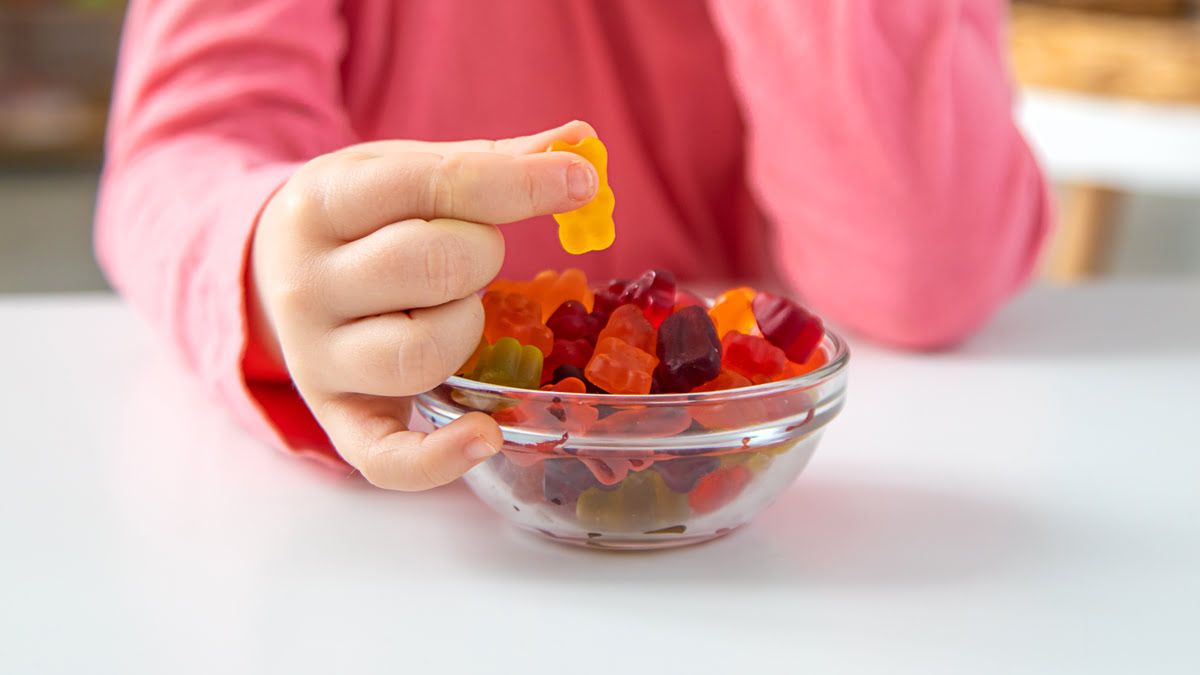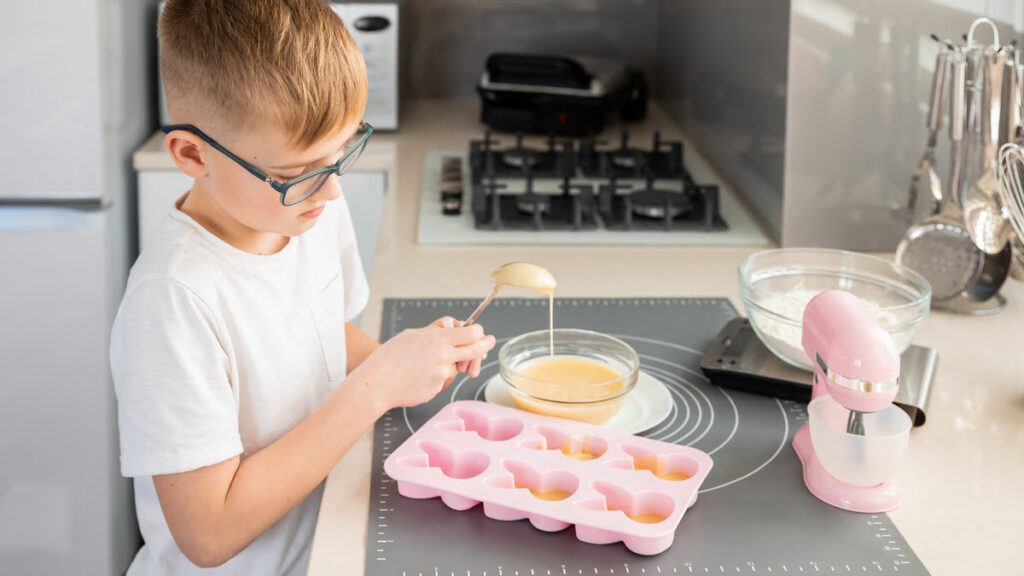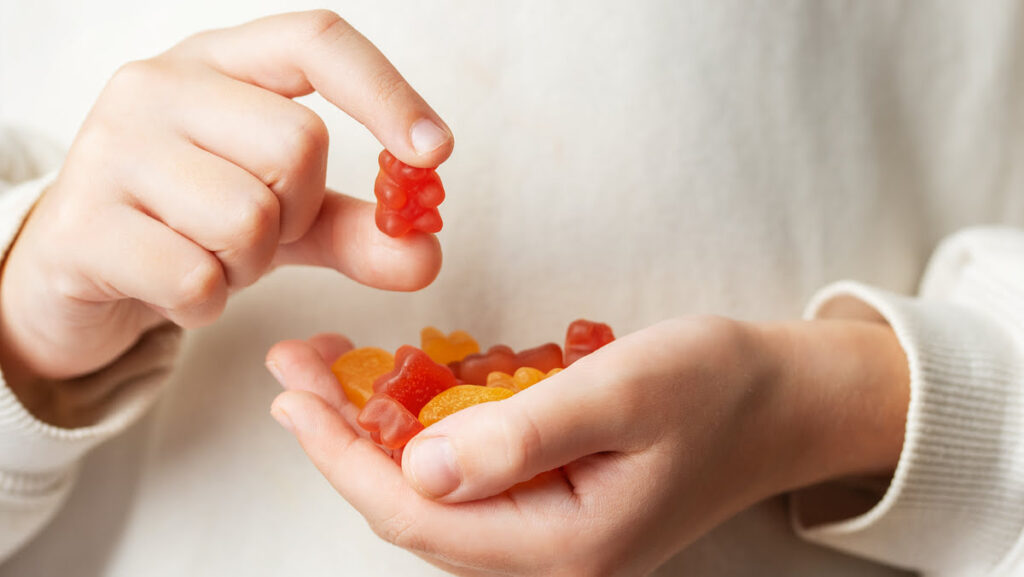
Gelatin has long been a staple in many households – found in jellies, dairy-based desserts, and candies that particularly appeal to children. However, health-conscious parents often wonder whether gelatin-containing products are actually suitable for young kids. While commonly seen as a light, simple food additive, gelatin’s origin and method of production raise curiosity – and occasionally, concern. So, is there really anything to worry about? Is gelatin safe for children?
What Exactly Is Gelatin and How Is It Made?
Gelatin is a natural protein of animal origin, produced by processing collagen – the primary component of connective tissue, bones, and cartilage. The manufacturing process involves cleaning and prolonged heat treatment of collagen-rich raw materials, resulting in a powder or granules that easily dissolve in water to form a jelly-like consistency.
In the food industry, gelatin is prized for its gelling, stabilizing, and thickening properties. It’s what gives jellies, yogurts, candies, and creamy desserts their firm texture and shelf stability. While pork and beef gelatin are the most common types found in stores, there are also fish-based products and plant-based alternatives, such as agar-agar and pectin. These perform similar technological functions and are suitable for vegetarian and vegan diets.
It’s worth noting that gelatin is not just a culinary additive – it also contains valuable amino acids like glycine and proline, which help support joint function, skin regeneration, and digestive health. For this reason, gelatin is widely used not only in food production but also in the pharmaceutical and cosmetic industries.
Nutritional Value of Gelatin
Although gelatin is primarily a technological additive rather than a standalone food, its composition still matters for health. It is made up of almost pure collagen protein, containing key amino acids such as glycine, proline, and hydroxyproline. These play an important role in the structure of cartilage, bones, skin, hair, and nails.
That said, gelatin does not provide complete protein, as it lacks some essential amino acids that the body cannot produce on its own. Therefore, it should not be treated as a main source of protein in the diet. Gelatin is also low in calories and contains virtually no fat or carbohydrates, making it a popular ingredient in light desserts and low-calorie snacks.
In short, gelatin can be a nutritional supplement supporting the body, especially in terms of collagen and amino acid intake – but it does not replace other sources of protein, vitamins, or minerals.
Is Gelatin Safe for Children?
When consumed in reasonable amounts, gelatin is considered a safe dietary component for children. On its own, it poses no health risks – it is easily digestible and well tolerated by the body, which makes it suitable for inclusion in a child’s diet from the early years of life. Pediatricians recommend introducing gelatin-containing foods gradually and in small portions, especially for the youngest children whose digestive systems are still developing.

It’s important to note that the risks associated with gelatin typically come not from the collagen protein itself, but from the additives in processed products – such as colorings, artificial flavors, or high amounts of sugar. Jelly-based desserts and gummy candies are popular treats but should be seen as occasional extras, not regular staples in a child’s diet.
Moreover, gelatin is commonly found in medicinal products and dietary supplements, including capsules and joint-support formulas – further confirming its wide use and general tolerance among various age groups.
Gelatin for Children – From What Age?
Experts emphasize that there is no need to introduce gelatin into an infant’s diet before the age of one.
This is mainly because gelatin-containing foods – such as jellies and colorful desserts – tend to be low in nutritional value and may contain high levels of sugar, artificial colors, or flavors. During the first months of life, a baby’s diet should focus on foods rich in vitamins, minerals, and complete proteins, meaning gelatin offers limited benefits at this stage.
Although small portions are generally safe, many professionals recommend waiting until around the child’s first birthday, or preferably closer to two years of age, before including gelatin in the diet – and even then, in moderation.
Parents looking to diversify their child’s meals can also consider plant-based alternatives, such as agar-agar or pectin, which serve the same gelling purpose and are suitable for vegetarian diets. Regardless of age, jelly and gummy products should remain occasional treats, not routine menu items.
Żelatyna dla dzieci a alergie pokarmowe
Gelatin allergies in children are relatively rare, but it’s important to be aware that they can occur – especially in young children who are prone to allergic reactions or have atopic conditions.
Since gelatin is an animal-derived protein, a child’s developing immune system may occasionally react with hypersensitivity. Allergy symptoms may include skin rashes, itching, stomach pain, or nausea. In more severe cases, respiratory symptoms may also appear.
Extra caution is needed if the child has known allergies to beef, pork, or fish proteins, as these can increase the likelihood of a reaction to gelatin.
If an allergy is confirmed, it’s crucial to carefully check the ingredients in medications, as gelatin capsules are among the most commonly used pharmaceutical forms. Always inform your doctor of any previous allergic reactions, so that safe substitutes or alternative formulations can be selected.
Although such cases are uncommon, it is still recommended to introduce gelatin gradually into the child’s diet while monitoring for any adverse effects. For allergy-prone children, plant-based alternatives such as agar-agar may be a safer, hypoallergenic option.
Gelatin in Jelly Desserts for Children
Jelly desserts have long held a special place in children’s diets – their vivid colors, fruity flavors, and fun, bouncy textures make them an easy favorite. However, from a nutritional standpoint, these treats offer very little real value, especially when purchased pre-made from a store.
While the gelatin base itself is not harmful – and is even mildly beneficial due to its collagen content – the actual amount used in each portion is minimal, making its nutritional impact negligible. The concern lies not in the gelatin itself, but in the extra ingredients that often accompany it.
Store-bought jellies typically contain:
- high amounts of refined sugar – contributing to weight gain and increasing the risk of tooth decay,
- artificial colorings and flavorings – some of which have been linked to hyperactivity and adverse reactions in sensitive children,
- preservatives and acidifiers – which extend shelf life but may irritate delicate digestive systems.
Given these concerns, health experts recommend that jelly desserts be treated as an occasional indulgence, rather than a staple snack. The younger the child, the more important it is to be selective about the quality and frequency of such treats.
For parents seeking a healthier alternative, homemade jelly is an excellent solution. By using natural fruit juices, a minimal amount of sweetener, and pure gelatin, you can create a dessert that is:
- free from artificial additives,
- lower in sugar,
- and tailored to your child’s age and dietary needs.
Homemade jelly can be safely introduced after the age of 12 months, while limited portions of commercial jelly may be acceptable for children aged 2 and up – provided the ingredient list is short, simple, and free of chemical additives.
Ultimately, moderation and ingredient awareness are key. Gelatin-based desserts can be part of a child’s diet, but they should never replace nutrient-rich meals or wholesome snacks like fresh fruit, yogurt, or whole grains.
Healthy Jelly Recipe for Children
Creating your own jelly at home allows you to control the ingredients and avoid unnecessary additives. It’s a great way to prepare a treat that’s both fun and nutritious – especially when made with real fruit juice and quality gelatin.
Here’s a simple recipe for homemade jelly suitable for toddlers and older children:
Ingredients:
- 400 ml of natural fruit juice (e.g., apple, raspberry, or peach – preferably cold-pressed),
- 2 tablespoons of edible gelatin (approx. 20 g),
- Optionally: 1 teaspoon of honey or a small amount of natural sweetener (only for children over 1 year old),
- Fresh fruit pieces (berries, banana slices, or kiwi – optional).
Instructions:
- Pour about 100 ml of the juice into a bowl and sprinkle the gelatin over it. Let it soak for 5-10 minutes until it swells.
- Gently heat the remaining 300 ml of juice (do not boil).
- Add the swollen gelatin and stir until fully dissolved.
- Sweeten to taste, if needed, using honey or another mild sweetener.
- Pour into molds or cups. Add fruit pieces if desired.
- Refrigerate for at least 2-3 hours until fully set.
The result is a light, refreshing dessert free of colorings and preservatives – perfect for an afternoon snack or party treat.

How to Serve Jelly to a Child
Even though homemade jelly is a safer and healthier choice, it’s still important to serve it properly and with moderation – especially to young children.
- When serving jelly to children, it’s important to adjust the form and texture to suit their age and eating abilities. For the youngest ones – especially toddlers under 3 – jelly should be soft, smooth, and cut into small, manageable pieces to minimize the risk of choking.
- Even seemingly harmless foods like jelly can be dangerous if consumed in the wrong circumstances. Children should not eat jelly while walking, playing, or lying down, as this significantly increases the risk of aspiration. Such rules apply to both homemade and store-bought products, regardless of their consistency.
- It’s also worth paying attention to the texture of store-bought products – especially gummy candies, which are often firmer and more elastic, making them harder to chew for young children. Introducing jelly gradually and monitoring your child’s reaction can help avoid unpleasant situations and support the development of safe eating habits.
Always supervise your child during meals and snacks, particularly when serving foods with unusual textures or consistencies.
Żelatyna w żelkach dla dzieci
Gummy candies are a very popular type of sweet among children, thanks to their vibrant colors, fruity flavors, and pleasantly chewy texture. Their main ingredient is, of course, gelatin, which gives them their characteristic springiness and defined shapes. While gelatin itself is not harmful, it’s important to remember that most commercial gummy candies also contain large amounts of sugar, colorants, and flavorings, making them a product with low nutritional value.
Pediatricians recommend that children under the age of 3 should avoid eating gummies – not only because their digestive systems are still developing, but also due to the high risk of choking on small, sticky pieces. Additionally, excessive sugar intake can negatively impact immune function, dental health, and future eating habits.
Older children – those over the age of 3 – can consume gummy candies occasionally and in small amounts. The key is moderation and choosing products with the shortest possible list of ingredients, ideally free from artificial dyes and preservatives. It’s also worth remembering to maintain proper oral hygiene – after eating sticky sweets, children’s teeth should be thoroughly brushed to prevent tooth decay.
Can Children Eat Gelatin? – Summary
Gelatin can be a safe and valuable addition to a child’s diet – provided it is used wisely and in moderation. As a natural source of collagen and protein, it offers mild nutritional benefits and is generally well tolerated, even by young children.

However, it’s important to distinguish between pure gelatin (used, for example, in homemade jelly) and highly processed foods that contain gelatin – such as commercial gummies or flavored jellies. These often come with a significant dose of sugar, colorings, and artificial additives, which reduce their health value and may pose risks, particularly for the youngest children.
When introducing gelatin into a child’s menu:
- do so gradually and in age-appropriate forms,
- choose high-quality products with short ingredient lists,
- and limit the frequency of serving gelatin-based treats.
When used thoughtfully, gelatin can be part of a balanced and diverse diet, adding both texture and variety to meals – especially when paired with nutritious ingredients such as fruit or yogurt.



